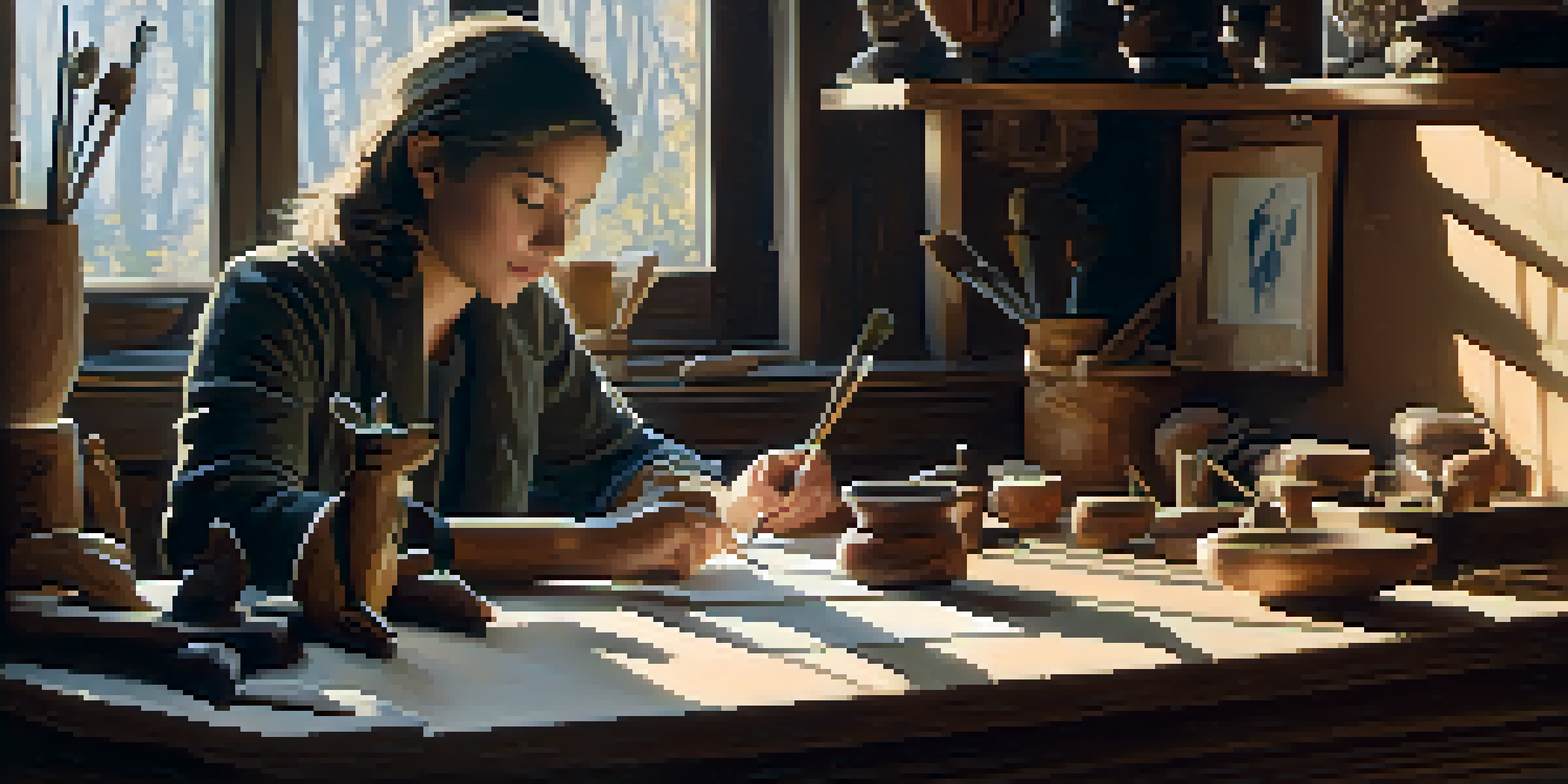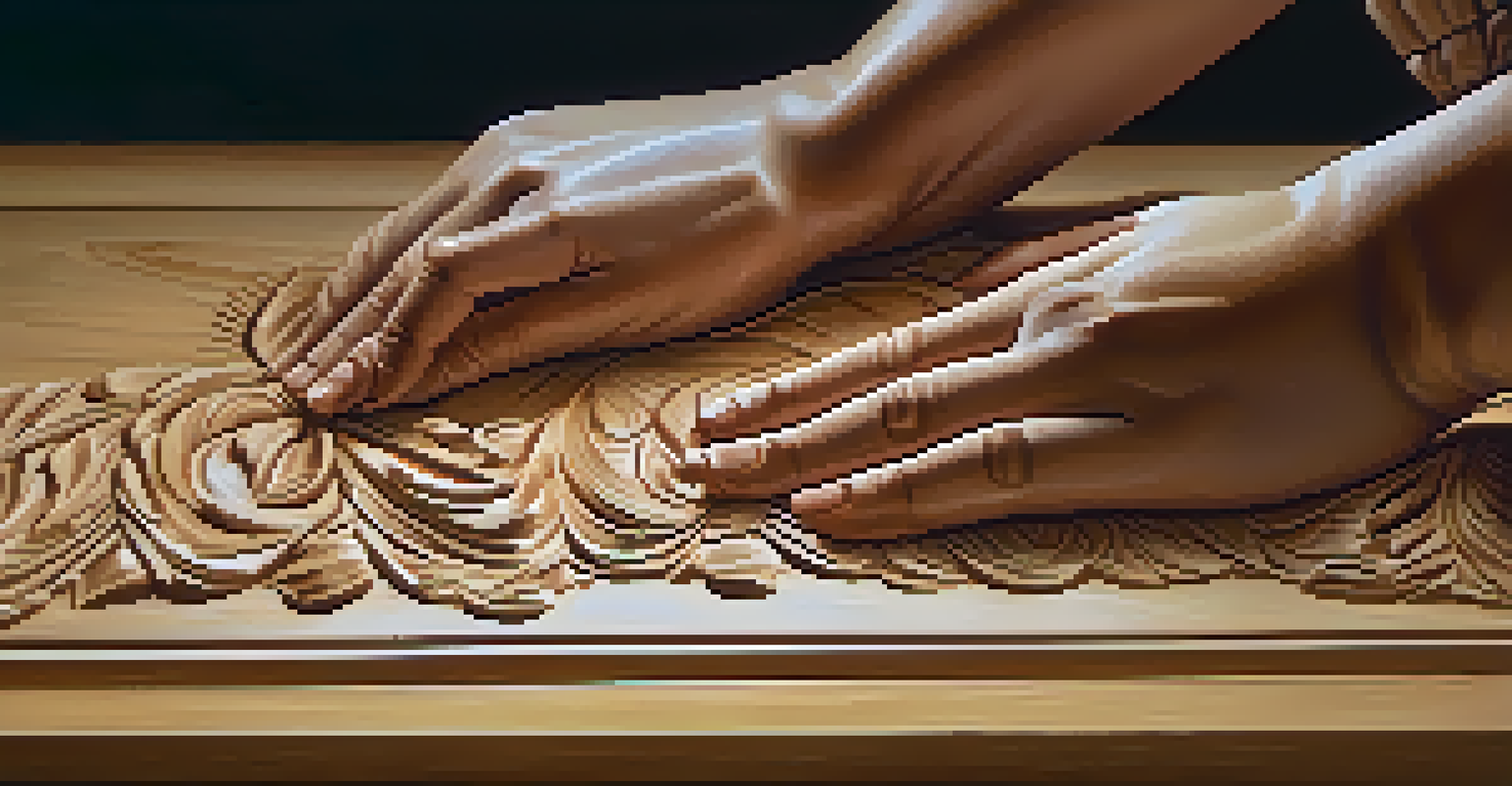Mindfulness Through Carving: A Step-by-Step Guide

Understanding Mindfulness and Its Benefits
Mindfulness is the practice of being fully present and engaged in the moment. It encourages awareness of your thoughts, feelings, and surroundings without judgment. This practice can reduce stress and improve overall well-being, making it increasingly popular in our fast-paced world.
Mindfulness isn't difficult. We just need to remember to do it.
When you incorporate mindfulness into creative activities, like carving, you enhance your focus and connection to the process. Carving requires precision and attention, which naturally aligns with mindfulness principles. As you immerse yourself in this hands-on activity, you’ll find it easier to let go of distractions.
Engaging in mindful carving not only allows you to create something beautiful but also serves as a form of meditation. This blend of creativity and mindfulness can lead to a profound sense of calm and satisfaction, making it a fulfilling way to spend your time.
Gathering Your Carving Tools and Materials
Before you start your carving journey, it’s essential to gather the right tools and materials. Basic tools include a carving knife, chisels, and a cutting board or block of wood. Choosing the right wood, such as basswood or butternut, is also crucial, as these types are soft and easy to carve for beginners.

Assembling your workspace can greatly enhance your carving experience. Look for a quiet, well-lit area where you can focus without interruptions. Having a comfortable chair and a stable table can make a significant difference in your ability to concentrate and enjoy the process.
Mindfulness Enhances Carving Focus
Incorporating mindfulness into carving allows you to improve focus and connect deeply with the creative process.
Don’t forget to include safety gear, such as a carving glove, to protect your hands while you work. Being prepared not only boosts your confidence but also ensures a safer and more enjoyable carving session.
Choosing a Simple Design to Start With
Selecting a simple design is crucial for beginners. Start with something easy, like a small animal or a geometric shape, to build your skills and confidence. This initial choice will allow you to familiarize yourself with the tools and techniques without feeling overwhelmed.
Every artist was first an amateur.
Once you’ve picked your design, sketch it lightly on the wood. This step serves as a guide while you carve and helps you visualize the final product. Don’t worry about making it perfect; the goal is to enjoy the process and learn as you go.
Remember, the journey of carving is just as important as the final piece. Embrace any imperfections, as they often add character and uniqueness to your work. Each carving tells a story, and your creative expression is what truly matters.
Mastering Basic Carving Techniques
Understanding basic carving techniques is essential for successful results. Start with simple cuts, like push cuts and pull cuts, to shape the wood gradually. Practice these techniques on scrap pieces before moving on to your actual design, allowing you to gain confidence.
As you become more comfortable, experiment with different angles and pressure to see how they affect your carving. This hands-on experimentation is a great way to learn and develop your unique style. The more you practice, the more intuitive the techniques will become.
Start with Simple Designs
Choosing easy designs as a beginner helps build confidence and familiarity with carving tools and techniques.
Remember to take breaks and reflect on your progress. This mindfulness practice not only helps prevent fatigue but also keeps you engaged in the moment. It encourages you to appreciate the craftsmanship and effort you put into each piece.
Embracing the Mindful Carving Process
Mindful carving is all about embracing the process rather than focusing solely on the end result. As you carve, pay attention to the sounds of the tools, the texture of the wood, and the rhythm of your movements. This sensory engagement helps anchor you in the present moment.
Allow yourself to get lost in the carving experience. The repetitive motions and focused attention can be meditative, providing a break from daily stressors. When you immerse yourself fully, you may find that time seems to stand still, creating a peaceful and enjoyable atmosphere.
Stay patient and kind to yourself throughout the carving process. If you encounter challenges, view them as opportunities to learn and grow. This mindset not only enhances your skills but also promotes a sense of accomplishment, regardless of the final outcome.
Finishing Touches: Sanding and Polishing
Once your carving is complete, it’s time to add the finishing touches. Begin by gently sanding the surface to smooth out any rough edges. This step not only improves the aesthetic appeal of your piece but also enhances its overall feel.
Consider applying a wood finish or polish to protect your carving and bring out the natural beauty of the wood grain. Depending on your preference, you can choose oils, waxes, or varnishes that suit your style. This added layer not only preserves your work but also elevates its visual impact.
Sharing Boosts Community Engagement
Sharing your carving experiences and creations fosters connections with others and inspires creativity in the community.
As you finish your carving, take a moment to appreciate your efforts and the mindfulness journey you embarked on. Each piece is a reflection of your creativity and dedication, serving as a reminder of the joy found in the process.
Sharing Your Carving Experience and Creations
Sharing your carving journey can be a rewarding experience. Whether it’s showing off your finished pieces to friends and family or posting them on social media, sharing your work allows you to connect with others who appreciate craftsmanship. It can inspire others to explore their creative paths as well.
Consider joining local carving clubs or online communities where you can exchange tips, techniques, and encouragement. Engaging with fellow carvers enhances your learning experience and fosters a sense of belonging. You’ll find that sharing your challenges and successes can be incredibly fulfilling.

Lastly, reflect on what you’ve learned through this mindful carving practice. Each piece you create tells a story, and your journey is just as important as the outcome. Embrace your growth and continue to carve out moments of mindfulness in your life.